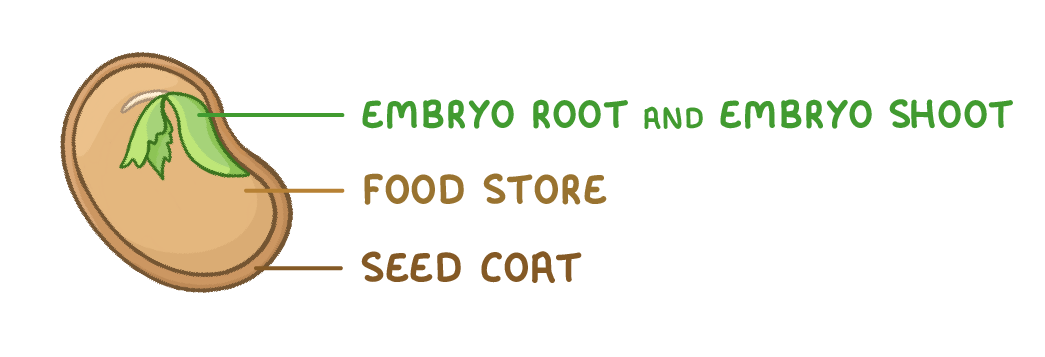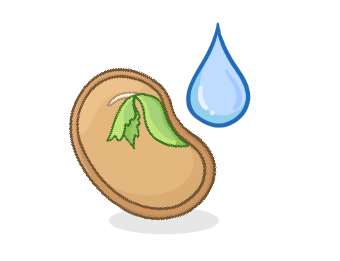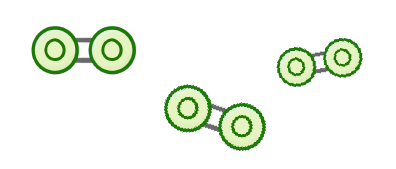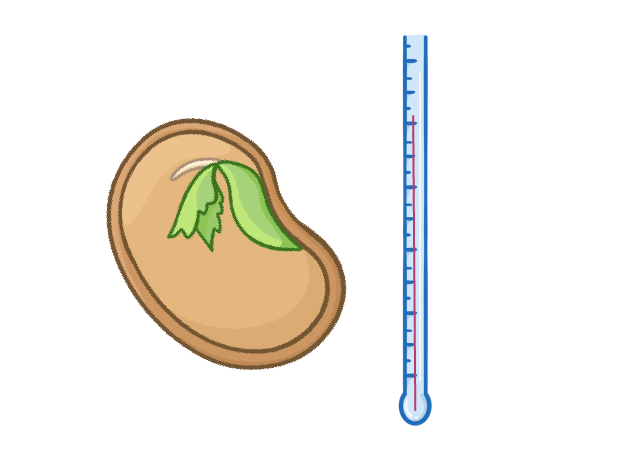Seeds & Germination
This lesson covers:
- The structure of a seed
- What 'germination' means
- The conditions required for a seed to germinate
Structure of a seed

1Embryo root and embryo shoot – the young root and shoot that will become the adult plant. You may see this called 'embryo root and shoot'.
2Food store – a store of lipids and starch for the young plant to use until it is able to carry out photosynthesis.
3Seed coat – a tough protective outer covering.
 Germination is a process, controlled by enzymes, in which the seed begins to develop into a new young plant. Three main factors are needed for successful germination: |
 Water - causes the seed to swell, and activates the enzymes required for growth. |
 Oxygen - required for aerobic respiration, which provides the energy needed for the plant to grow. |
 Warmth - increases the rate of enzyme activity, which in turn increases the rate of growth. However, very high temperatures can denature enzymes and so may slow or stop its growth. |
What are the 3 main factors needed for successful germination?
|
What substance do seeds require in order to swell and activate their enzymes?
|
Why do seeds require oxygen in order to germinate?
|
Will plants germinate at very high temperatures (e.g. 60°)? Why?
|